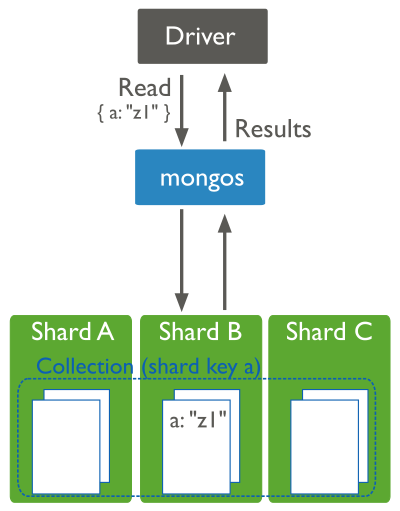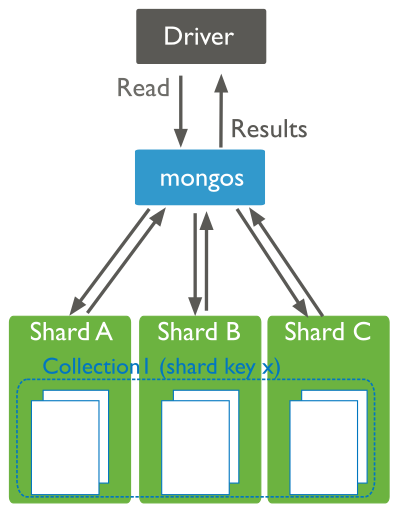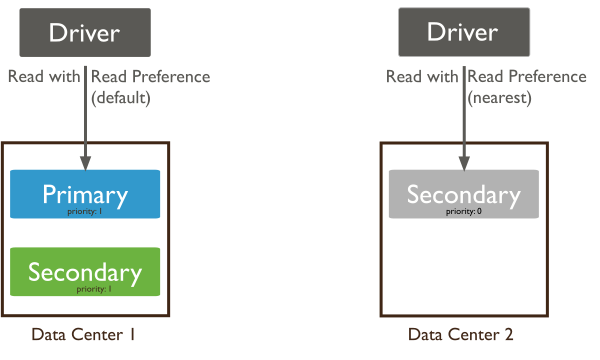- MongoDB CRUD Operations >
- MongoDB CRUD Concepts >
- Read Operations >
- Distributed Queries
Distributed Queries¶
Read Operations to Sharded Clusters¶
Sharded clusters allow you to partition a data
set among a cluster of mongod instances in a way that is
nearly transparent to the application. For an overview of sharded
clusters, see the Sharding section of this manual.
For a sharded cluster, applications issue operations to one of the
mongos instances associated with the cluster.

Read operations on sharded clusters are most efficient when directed to
a specific shard. Queries to sharded collections should include the
collection’s shard key. When a query
includes a shard key, the mongos can use cluster metadata
from the config database to route the
queries to shards.

If a query does not include the shard key, the mongos must
direct the query to all shards in the cluster. These scatter
gather queries can be inefficient. On larger clusters, scatter gather
queries are unfeasible for routine operations.

For more information on read operations in sharded clusters, see the Sharded Cluster Query Routing and Shard Keys sections.
Read Operations to Replica Sets¶
Replica sets use read preferences to determine where and how to route read operations to members of the replica set. By default, MongoDB always reads data from a replica set’s primary. You can modify that behavior by changing the read preference mode.
You can configure the read preference mode on a per-connection or per-operation basis to allow reads from secondaries to:
- reduce latency in multi-data-center deployments,
- improve read throughput by distributing high read-volumes (relative to write volume),
- for backup operations, and/or
- to allow reads during failover situations.

Read operations from secondary members of replica sets are not guaranteed to reflect the current state of the primary, and the state of secondaries trails the primary by some amount of time. [1]
For more information on read preference or on the read preference modes, see Read Preference and Read Preference Modes.
| [1] | In some circumstances, two nodes in a replica set may transiently
believe that they are the primary, but at most, one of them will be
able to complete writes with {w: majority} write concern.
The node that can complete {w: majority} writes is the
current primary, and the other node is a former primary that has not
yet recognized its demotion, typically due to a network
partition. When this occurs, clients that connect to the former
primary may observe stale data despite having requested read preference
primary. |